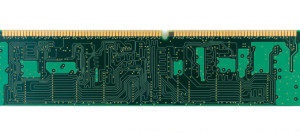Or the Conversion of Short Term Memory to a Long Term Memory
Student appreciation for the formation of long term memories is tantamount to their understanding of the learning process. Many students that “knew it” last night but blanked out the next day during the test, probably never reliably held the information in their long term memory. A student’s awareness of their long term memory brings more integrity to their study routine. Likewise, study routines should involve multiple sensory inputs (auditory, visual and kinesthetic) to create a rich (interconnected) memory. To truly understand long term memory a student needs to know if they are relying on their short term memory when they are determining their readiness for a test.
Short term memory is ephemeral. It is a transitory memory that lasts for seconds. Short term memories are either discarded or, overtime, are incorporated into long term memory. Mel Levine made a simple model (The Memory Factory)for memory that can be a very helpful model that gives students a useful model for a complicated process involving short term memory, working memory and long term memory. In his model, a short term memory can be discarded, sent directly to long term memory (this happens relatively rarely), sent to our working memory, or results in a response or output (like ducking out of the way of a snow ball). Working memory (also a short term memory, lasts for about 20 minutes) is a brainy work bench. The student consciously places a short term memory on this work bench (working memory) for further investigation. The decision to place short term memory in working memory takes a matter of seconds and requires the student to be attentive. If the student waits much longer than a few seconds to put a piece of information in his working memory the short term memory is likely lost. The use of short term memory input into our working memory is augmented by the addition of long term memories. As a result, the working memory is a combination of short term memory and long term memory. The term work bench is appropriate because it is the location in the brain where we solve problems or develop new insights. I use a computer analogy when I work with students to help drive home some important features of the working memory.
I liken the random access memory to our working memory and the hard drive memory to our long term memory. Like random access memory, the working memory is relatively small compared to the long term memory (hard drive). Also, unless you transfer something from your random access memory to your hard drive you will lose the information. Likewise, if we don’t transfer a memory from working memory to our long term memory, we will lose the memory. Information in our working memory will fade over time. Neurocognitive tests that test our ability to convert short term memories into long term memories wait one hour between exposure of new information and the retrieval and use of that new information.
The differences in our memory and the computer model are also important to point out. Unlike the file transfer from random access memory to the hard drive, the process of moving information from the working memory to long term memory (cerebral cortex) takes time, occurs incrementally, and is biological (not electronic and mechanical as in a computer). The biological aspect of long term memory formation depends on time to build connections between brain neurons of one region (cerebral cortex) and brain neurons associated with that memory in other regions of the brain. Each region of the brain that is linked to a memory is a potential access point to retrieve a memory. Initiating an access point of memory will likely trigger other features of a memory located in others parts of the brain. These multiple access points improve the likelihood a student will recall memory.
A student that understands that it takes about 20 minutes for their working memory to fade will appreciate aspects of their study routine that incorporates limitations of our working memory. As a result, a student testing their long term memory will wait one hour between studying information and a self test. By waiting one hour, a student brings integrity to their study process. It can eliminate the well practiced statement, “I knew it last night, but it is gone today.” A student that is only testing their working memory the night before the test will likely suffer the next day when they need to rely on their long term memory that has not yet been formed and consolidated in the brain. Much of the information that was available in their working memory the previous night will fade and leaves a potentially sketchy long term memory available during the test the next day.
As a result, students need to plan their study routine so that there is a one hour break between study time and their self test. If a student correctly completes the self test one hour later, they can be more confident in their knowledge being located in their long term memory. Any material that is missed in the self test is not reliably held in long term memory and requires further study. Students should realize that putting memories into long term memory occurs over a period longer than one hour. Conversion of short term memories to long term memories is a biological process that is facilitated by our sleeping cycles. As a result, practiced learners also understand the importance of adequate sleep to the learning process and a study plan that is longer than a one night cramming session. An appreciation of how long term memories are formed will lead to a great opener on the topic of study plans.

